
Books
Books by Lama Shenpen & her teachers
Keeping the Dalai Lama Waiting & Other Stories
An English Woman's Journey to Becoming a Buddhist Lama
Lama Shenpen's autobiography.
Available from Amazon
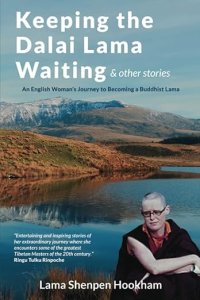
The Guru Principle
A Guide to the Teacher-Student Relationship in Buddhism
Lama Shenpen discusses the various aspects of the role of teacher in Buddhism.
Available from Amazon
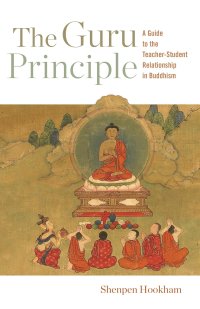
There's More to Dying than Death: A Buddhist Perspective
Drawing from the Tibetan Buddhist tradition of approaching and preparing for death, Lama Shenpen Hookham offers Westerners like herself practical descriptions of the attitudes, the practices, and the considerations that surround our own death, caring for those dying and also care-givers. Of great interest to those seeking a positive yet realistic coming to terms with death, its Buddhist context provides further teaching on the Tibetan Books of the Dead, one of the most well-known Tibetan texts.
Available from Windhorse Publications
Available from Amazon

The Buddha Within
Tathagatagarbha Doctrine According to the Shentong Interpretation of the Ratnagotravibhaga
Lama Shenpen's scholarly examination of the scriptural foundations and interpretation of teachings on Buddha nature.
Available from Amazon
Available to download
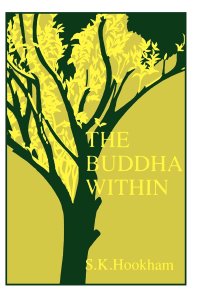
Progressive Stages of Meditation on Emptiness
Teachings of Khenpo Tsultrim Gyamtso Rinpoche, translated, edited and arranged by Lama Shenpen Hookham.
A traditional presentation of different understandings of emptiness and how they relate to meditation.
Available from Amazon
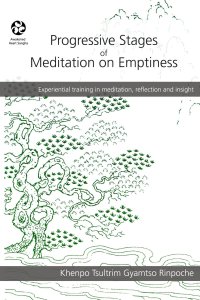
Never Turn Away
The Buddhist Path Beyond Hope and Fear
An introduction to the teachings of Rigdzin Shikpo Rinpoche, giving an overview of the Buddhist path as a search for truth in our own experience.
Available from the Longchen Foundation
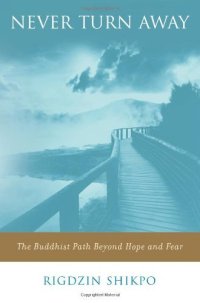
Openness Clarity Sensitivity
Openness Clarity sensitivity stresses the importance of confidence in the nature of mind, the heart essence of our being. It is what we essentially are, that aspect of our being which was never created and can never be destroyed. It is beyond creation and destruction, beyond time and space. It is mysterious and yet so familiar, indefinable and yet so simple. Rigdzin Shikpo describes how by cutting through our self doubt and hesitations the way is opened to connect directly to the true nature of our being. This allows us to relate properly to the teachings of the great gurus of the Maha-Ati (Dzogchen) Buddhist tradition.
Available from the Longchen Foundation

The Heart of Meditation
An Introduction to Formless Meditation
Lama Shenpen introduces meditation as she teaches it in the Awakened Heart Sangha.
Available from Amazon
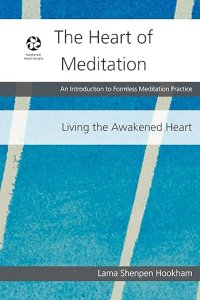
Living the Awakened Heart
This booklet is about long-term training in the Awakened Heart Sangha. It is written for students who are making, or thinking of making, the Awakened Heart Sangha their spiritual home. It explores the different aspects of teachings and practice in the Sangha and how form a single path.
Available from Amazon
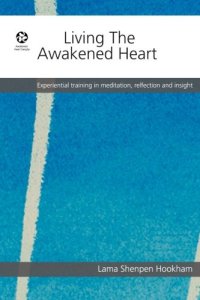
The Mandala of Sacred Space
Setting up your practice at home
Our lives are like a busy highway that mows down our tentative attempts to set aside a space for ourselves to explore in peace the true nature of our being. This booklet by Lama Shenpen is written primarily for students in the Awakened Heart Sangha but will be useful for anyone wishing to set up a regular practice of meditation in the Buddhist tradition.
Available from Amazon
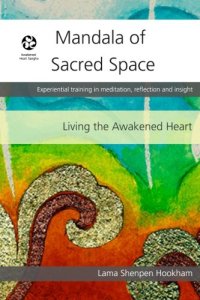
Apramanas
Practicing the four immeasurables
Apramana means measureless or limitless and refers to theBuddha qualities of limitless love, compassion, sympathetic joy and equalness. The Buddha is described as having completely equal love and compassion for all beings, wishing them all the highest joy of complete Awakening. This is a state that only a Buddha knows, so although others may seem to have equal and limitless love and compassion for all beings, they do not really know what the highest joy is and so cannot wish it fully for others. Thus only a Buddha can truly rest in the Apramanas. The rest of us are training in order to do so. This small booklet is written by Lama Shenpen Hookham to support students in the Awakened Heart Sangha engage in this profound meditation practice.
Available from Amazon
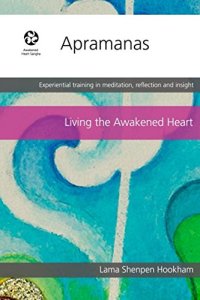
Samantabhadracharya Pranidhana
The Samantabhadracharya Pranidhana is the final section of the magnificent Avatamsaka Sutra. The Sanskrit word pranidhana means something like wishing prayer or aspiration. Known as the King of Pranidhanas, the Samantabhadracharya Pranidhana is the ultimate expression of the fully Awakened and fully operative Heart Wish for the Enlightenment of all sentient beings. As such, by studying and reciting it, we can gradually open up to its vision. This booklet by Lama Shenpen contains a complete translation of the Samantabhadracharya Pranidhana along with a brief commentary, drawing on oral teachings Lama Shenpen received from Bokar Rinpoche and other teachers.
Available from Amazon
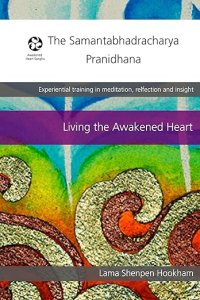
Taking Refuge and Bodhisattva Vows
A booklet by Lama Shenpen Hookham intended mainly for students in the Awakened Heart Sangha interested in Taking Refuge or the Bodhisattva vow.
Available from Amazon

